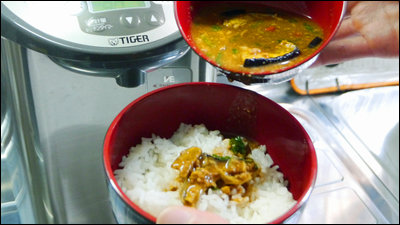The potential of ultra-low-carbohydrate 'tofu-dried', which is 90% off sugar even though it can be used as noodles, was too great.
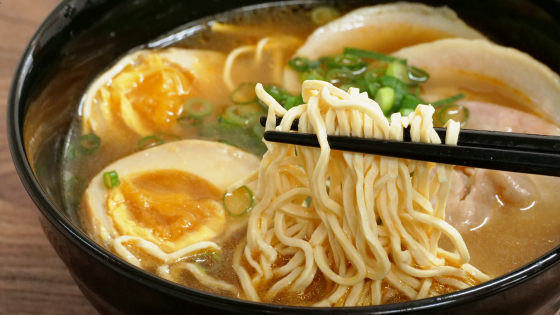
Some people who have sugar restrictions use konjak noodles for noodle dishes and have unfocused sadness saying, 'This is not the case ...'.
Dried tofu is also treated as 'tofu noodles ' and 'dried tofu'. The tofu dried this time is the following, which is frozen as a pack of 500g. When a woman holds it in her hand, it looks like this size.

The raw material names are spelled out as soybeans, salt, coagulants for tofu, and coloring agents.

Looking at the nutrition facts label, the calories per 100g are 159kcal, the protein is 16.3g, the fat is 10.1g, the carbohydrate is 1.9g, and the salt equivalent is 1.52g.
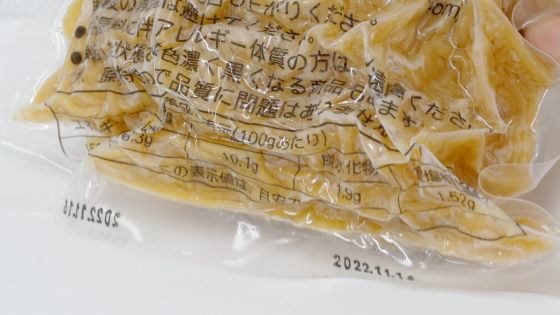
It was dried tofu purchased from Amazon, but there was no instruction manual on how to eat it, so I looked it up online and found that the basic process was thawed → boiled. It takes several hours to thaw at room temperature, but it can be thawed in about 30 minutes if it is thawed under running water.

When I opened the one that had been thawed under running water, the color was slightly whitish.

It can be loosened with chopsticks, but it has a dry texture and a unique scent like raw noodles. There is nothing I can't eat, but I can't eat it as it is ...
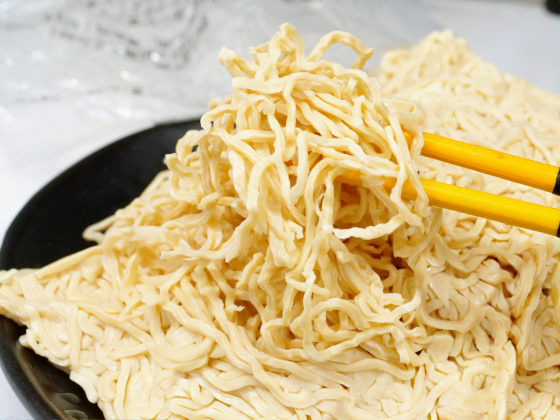
Put it in boiling water and boil it for about 5 minutes.
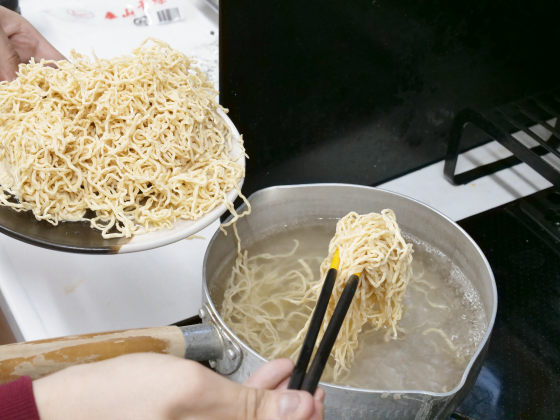
After boiling, put it in a bowl ...
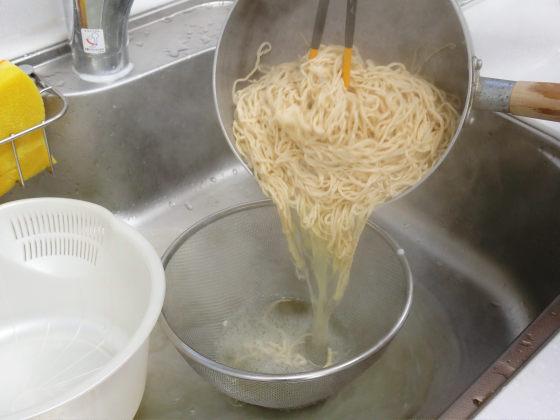
When I measured the weight, it was 565g. It doesn't seem to suck hot water that much.
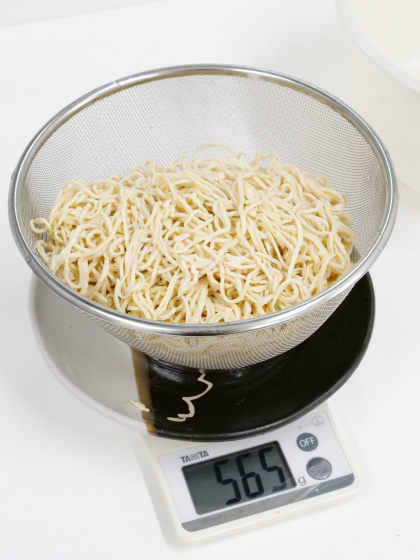
Compared to the 138.4mm high 2nd generation iPhone SE, the amount of one pack is about this.
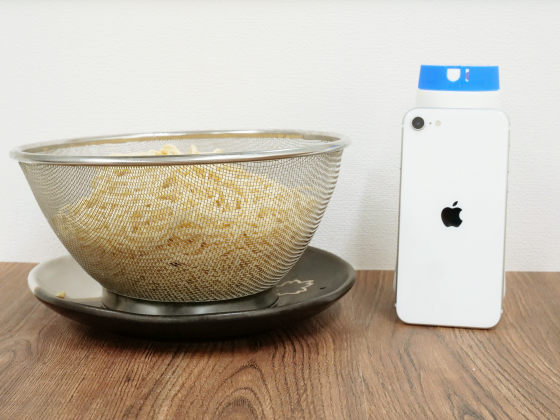
If you put 100g in a bowl for miso soup, it's about this amount.
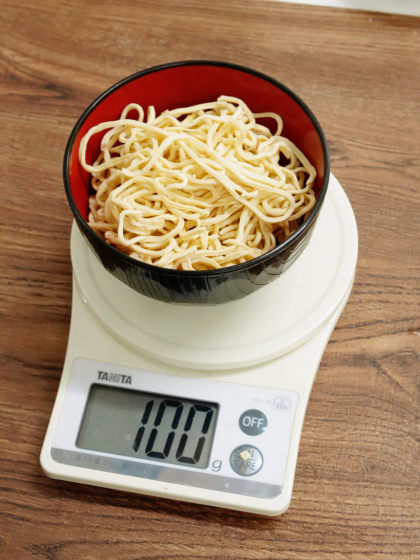
First of all, I will eat it as it is. The moment I lifted it with chopsticks, I felt a rubber band-like stiffness, so I ate it without much expectation that it would be lumpy, but the noodles did not cut in the middle, and the texture was lumpy. Is none. It has solid elasticity and was very well received by those who boasted that 'Udon is the life of Koshi.' Naturally, it has no flour flavor, but has a faint saltiness and a bean-like scent like tofu. The taste is very pale.
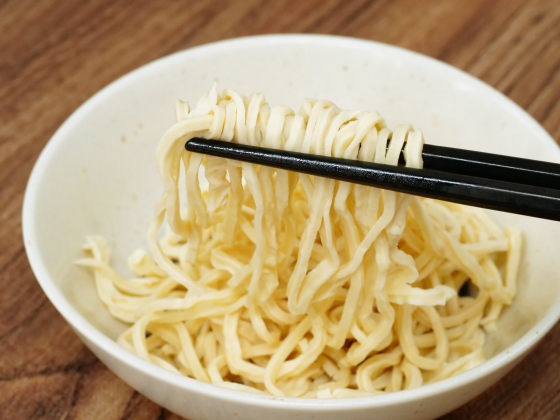
Also, because the surface is uneven, it is a big difference that it does not have the smooth texture of Chinese noodles. Some people may feel uncomfortable with the rough texture when eating.
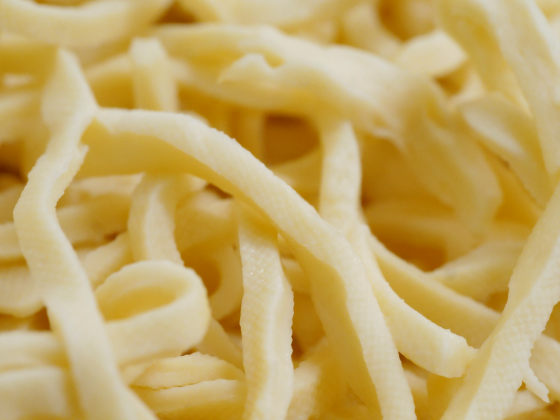
Dried tofu is sometimes served as a snack at Chinese restaurants, and it has a taste that seems to be delicious just by mixing it with sesame oil or salt. There was also an editorial staff member who said, 'The snacks mixed with

This time, in order to check the question 'Can it be used as a substitute for noodles?', We will start with ramen. Prepare miso soup and ingredients that dissolve in hot water.
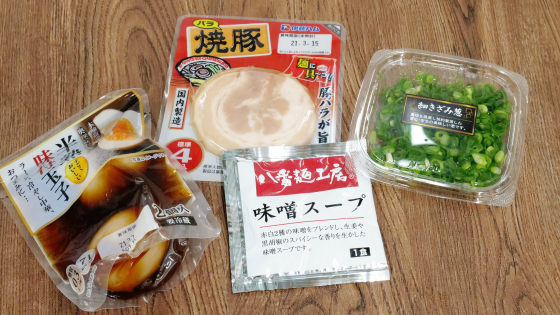
Put the miso soup in a bowl ...
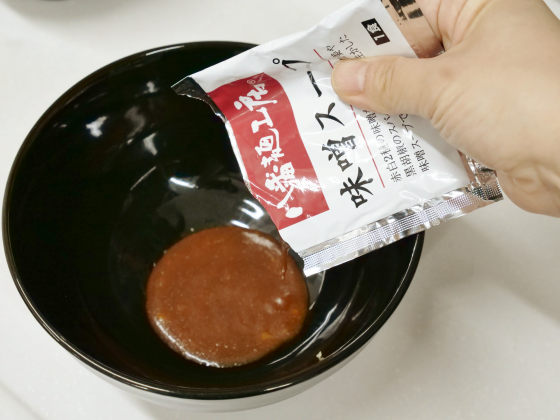
After pouring hot water, add boiled rice.
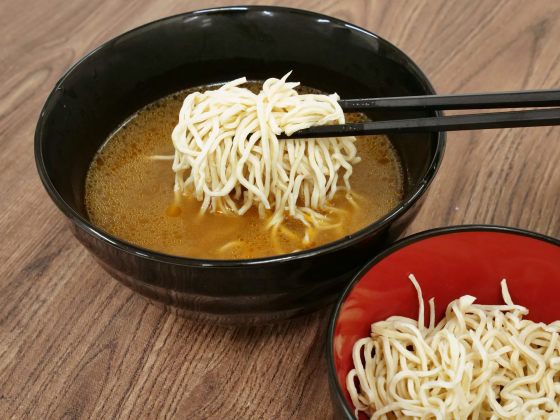
Completed by adding various ingredients. You can see the dried tofu from the soup, but the color is not strange and it looks like a normal ramen.
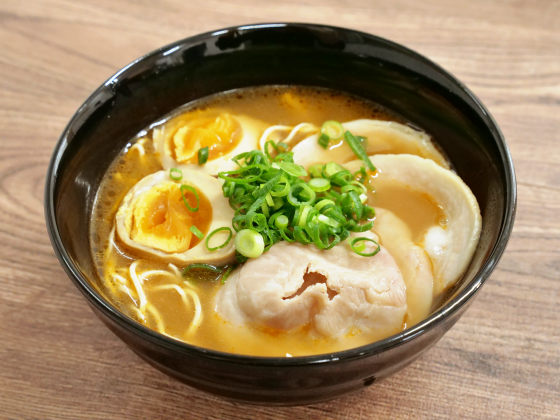
When I tried it, I was surprised that the dried tofu was entwined with the soup. While ordinary Chinese noodles are smooth, tofu-dried noodles have an uneven surface, so the entanglement with the soup is the best. Also, the unique smell that you felt when you ate it as it is disappears when you combine it with the soup. It has a strong chewy texture, so it has a different texture from ordinary noodles, but I was convinced when I was told that it was such a Chinese noodle. Alternative noodles such as konnyaku noodles have a great “korejanai” feeling due to the scent of konnyaku and the unique texture, but tofu-dried noodles are incomparably satisfying.
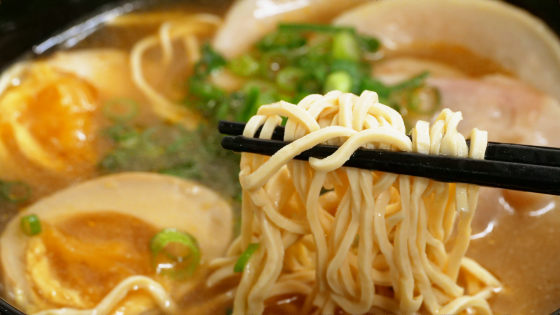
Next, I will make pasta. I prepared carbonara and cod roe as the sauce.
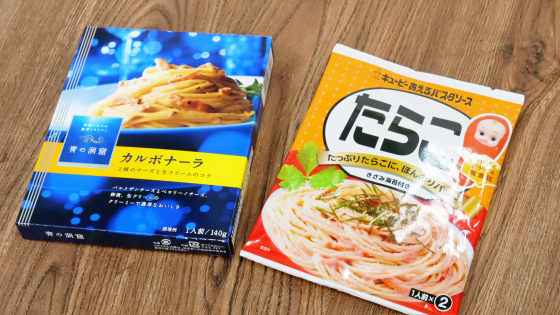
If you put 100g of noodles on a plate, it's about this amount.
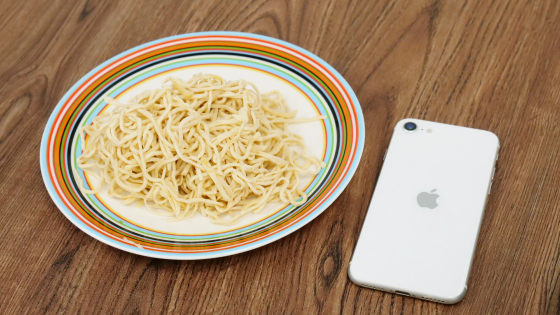
The height is like this.
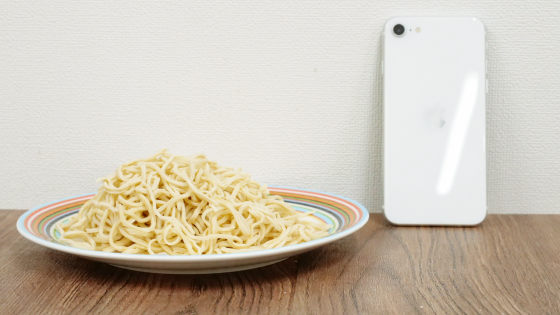
Sprinkle the warm sauce on the tofu ...
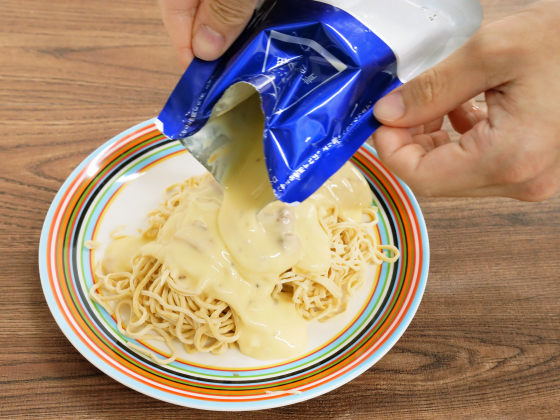
Complete.
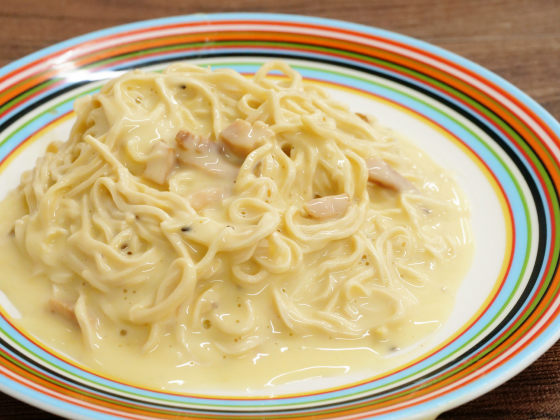
This is also because the surface of the dried tofu is uneven, so the sauce gets entangled. In the case of carbonara, if 100g of dried tofu was used for one bag of pasta sauce on the market, the sauce was too entangled and it was a little salty. It seems that it is necessary to devise whether to reduce the sauce or increase the noodles. As for the taste, when multiple people ate it, it was well received that 'the sauce is delicious until then, but it is rather amazing that it does not interfere with the taste of the sauce at all like other alternative noodles.' did.
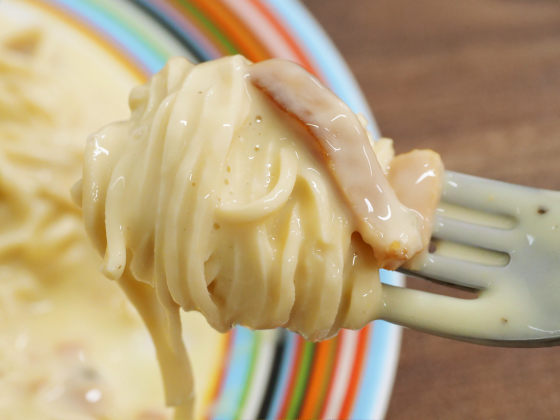
Even with cod roe sauce ...
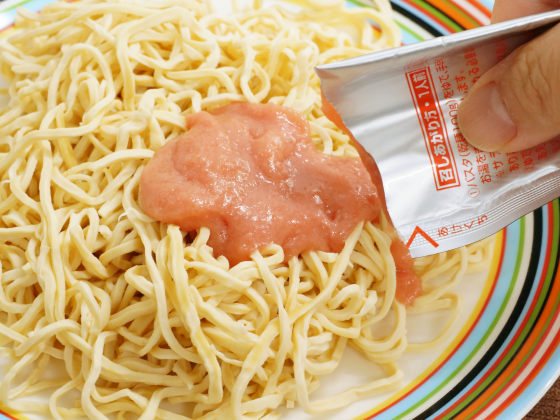
it matchs. The original taste of dried tofu is light, and the flavor is not peculiar, so I felt the high potential of 'fitting anything'.
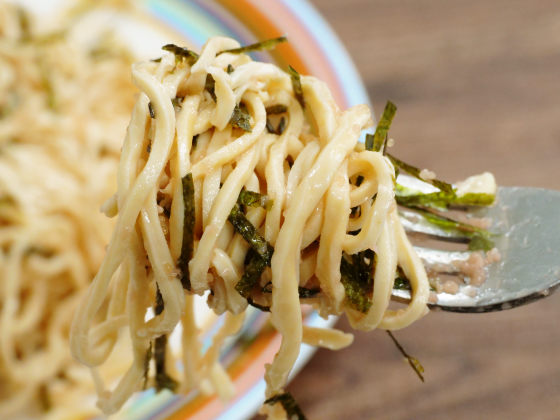
While eating various things, from the perspective of 'what does dougan fit?' To the perspective of 'what does it fit?' There was an opinion that 'it seems to be difficult to eat if you make noodle dishes with lots of ingredients', so I tried it. Stir-fry minced pork with doubanjiang, oyster sauce, soy sauce, etc ...
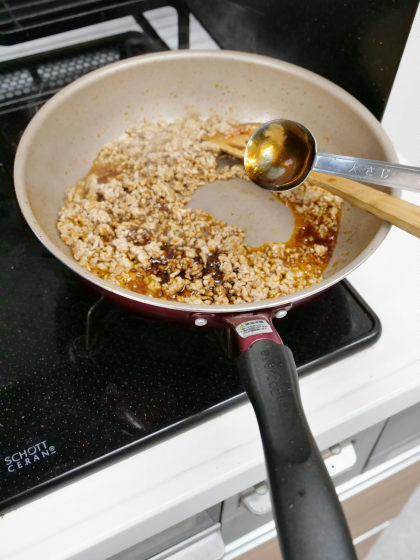
We will make Nagoya's specialty,
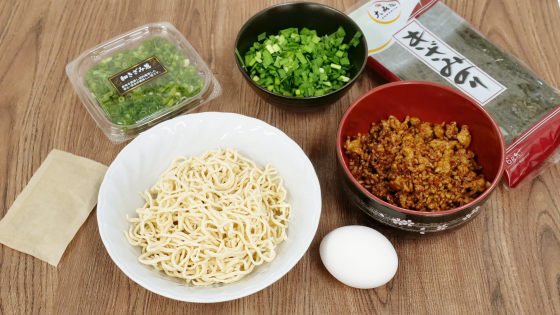
Place it on top of dried tofu.
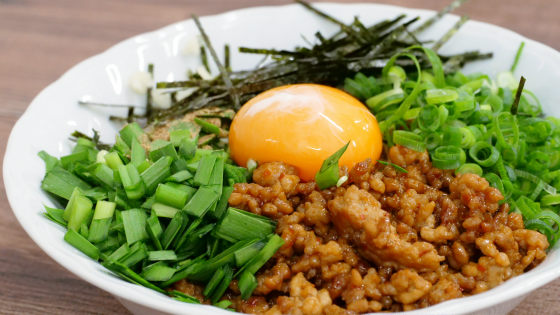
Since the dried tofu is entwined with each other, it certainly felt a little difficult to mix with the ingredients, but ...
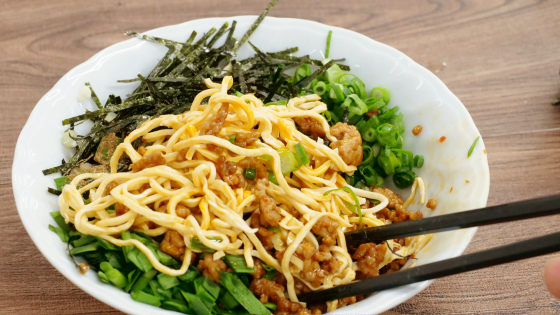
When I tried it, the increased amount of ingredients buried the rough texture peculiar to dried tofu, so it was rather the most comfortable alternative noodle ever. On the other hand, some people who became more and more fond of the taste of dougan while eating with various flavors said, 'I don't feel the dougan so much.'

The package of dried tofu said, 'Please avoid refreezing after thawing.' However, I was wondering how much the taste and texture would change when refreezing → thawing, so I frozen the boiled one. I tried it.
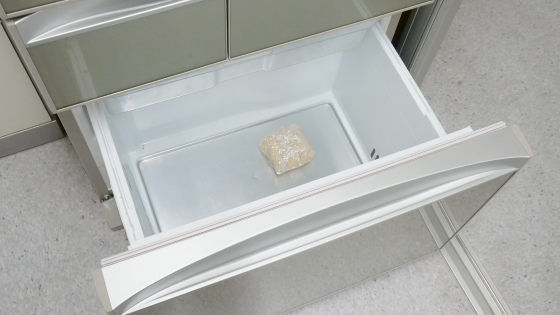
One day later, the frozen tofu was ticked ...
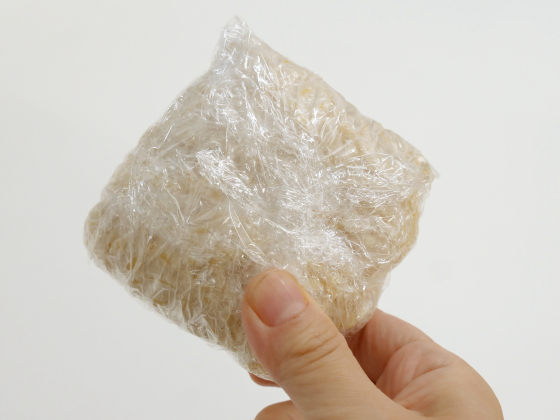
Chin in the microwave.

Will it become lumpy if it is re-frozen? I thought, but even if I pull it up as follows, the tofu will not run out. When I ate it, I felt that it had lost some water, but the taste and texture were almost the same, so the result was, 'Isn't it okay to refreeze after boiling?'

I tried to eat it like soba noodles soaked in mentsuyu, but of course it goes well because it is dried tofu with any seasoning. It doesn't have the scent of buckwheat, so it may not be a substitute for buckwheat, but it fulfilled my desire to eat noodle dishes.
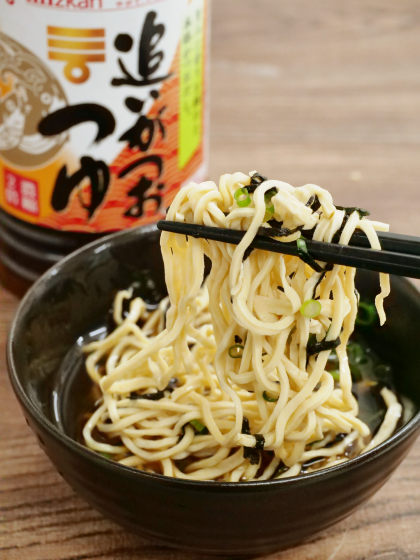
The tofu dried tofu purchased this time is 510 yen including tax and 890 yen for shipping on Amazon. In addition, Amazon sells 100g in 12 bags for 3800 yen, and Chinese food stores also sell it.
Amazon | Tomomori Features Taishan Dried Thread (Tofu Noodles, Tofu Dried Rice, Tofukansu) Chinese Ingredients, Chinese Cuisine Popular Products, Taiwanese Flavored Specialty | Tomomori | Tofu, Natto, Konnyaku, Kneaded Food Online Store


Related Posts:
in Gastronomic Adventure, Posted by darkhorse_log


